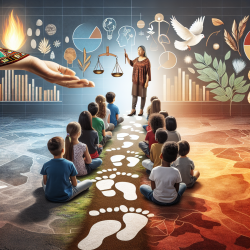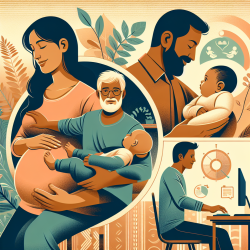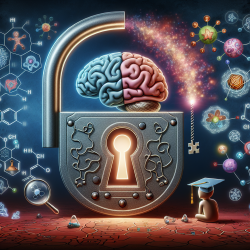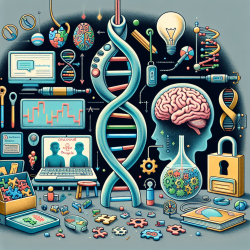Introduction
In the wake of natural disasters, children and young adults often face a barrage of cumulative stressful events that can severely impact their mental health. The research article titled "Cumulative Stressful Events and Mental Health in Young Adults After 10 Years of Wenchuan Earthquake: The Role of Social Support" offers profound insights into how these stressors affect mental health over time and the critical role social support plays in mitigating these effects. As practitioners, understanding these dynamics can significantly enhance our ability to support children effectively, especially in educational settings where online therapy services like those provided by TinyEYE can be instrumental.
Understanding the Research
The study followed 695 participants who experienced the Wenchuan earthquake, assessing their mental health over a decade. It was found that cumulative stressful events, such as childhood maltreatment and negative life events, had a dose-response relationship with mental health issues like depression and PTSD. The more stressors experienced, the greater the likelihood of adverse mental health outcomes.
Crucially, the study highlighted the buffering effect of social support. While higher social support reduced the negative impact of stress, its protective role diminished when stressors accumulated to high levels. This finding underscores the importance of fostering robust social support systems for young disaster survivors to prevent long-term mental health issues.
Practical Implications for Practitioners
For practitioners working with children, especially in school settings, this research emphasizes the need for a comprehensive approach to mental health support. Here are some actionable strategies:
- Assess Cumulative Stressors: Regularly evaluate the cumulative stressful events children face, including past traumas and current life stressors. This holistic view can inform targeted interventions.
- Enhance Social Support: Develop programs that strengthen social support networks for children. This can include peer support groups, family counseling, and community engagement activities.
- Tailor Interventions: Recognize that children exposed to multiple stressors may require more intensive or specialized interventions. Consider incorporating resilience-building and coping strategies into therapy sessions.
- Utilize Online Therapy: Platforms like TinyEYE can provide accessible and flexible therapy options, allowing for consistent support regardless of geographical or logistical barriers.
Encouraging Further Research
While the study provides valuable insights, it also opens avenues for further research. Practitioners are encouraged to explore how different types of social support (e.g., family vs. peer support) impact mental health outcomes. Additionally, investigating the role of digital interventions in enhancing social support could be particularly relevant in today's technology-driven world.
Conclusion
The findings from the Wenchuan earthquake study highlight the critical interplay between cumulative stressors and social support in shaping mental health outcomes. As practitioners, leveraging these insights can enhance our ability to foster positive outcomes for children, particularly in educational settings. By integrating comprehensive assessments, robust social support, and innovative online therapy solutions, we can better support children in navigating the challenges they face.
To read the original research paper, please follow this link: Cumulative stressful events and mental health in young adults after 10 years of Wenchuan earthquake: the role of social support.










